
On the eve of the draw for the 2022 FIFA World Cup in Qatar, which will reveal what will be the matchups of the tournament, it is necessary to know where the 64 matches that make up the tournament will be played. The competition will be played on eight courts that are distributed in five different cities. Due to the size of this Arab country located in West Asia that was chosen to organize the event, there will be no great distances between one and the other, as in other editions. Even, according to FIFA, it will be possible to attend two matches on the same day.
As is usual for the World Cup, the process of building the stadiums was not easy. The venues promise to be luxurious and innovative, but there was this usual concern that they could not be ready in time, and there were serious complaints. by the death of a large number of migrant workers.
However, this has not slowed down the development of the various venues that are within a radius of approximately 70 kilometers away and will expose the architecture of the Middle East to the world. For your safety, they will be monitored simultaneously from a special center. Here is a review of the scenarios that will host the highlights of the event for which all world football fans are waiting for:
• Lusail Stadium
The Lusail Stadium is located 15 kilometres north of the centre of Doha and is the largest of all, with a capacity for 80,000 people. This magnificent venue will be the venue where the World Cup Final will take place, which is scheduled for next December 18.

Its design is inspired by the dance of lights and shadows of traditional fanales, offering an unbeatable representation of the Arab world, as it also mints motifs from vessels, bowls and pieces of art from the region. In addition to the final, it will host another six matches from the group stage and three from the knockout round, including a semifinal. One of the peculiarities that this and other stadiums will have is that it will be cooled with solar energy to fight against high temperatures.
After the World Cup, Lusail Stadium is expected to be reconfigured to reduce its capacity to 40,000 seats, as it was specially built for the event and is then planned to be reused as a community space with schools, shops, cafes, sports and educational facilities, and a clinic of health.
• Stadium 974
It is one of the most striking stadiums in the world cup event, since it is the first in the history of the World Cup that is completely removable. It is located on the shores of the Gulf, east of Doha, and is connected to the rest of the country by the national metro line. The number in its nomenclature refers to the number of marine containers that were used to build it and the country's international telephone code.
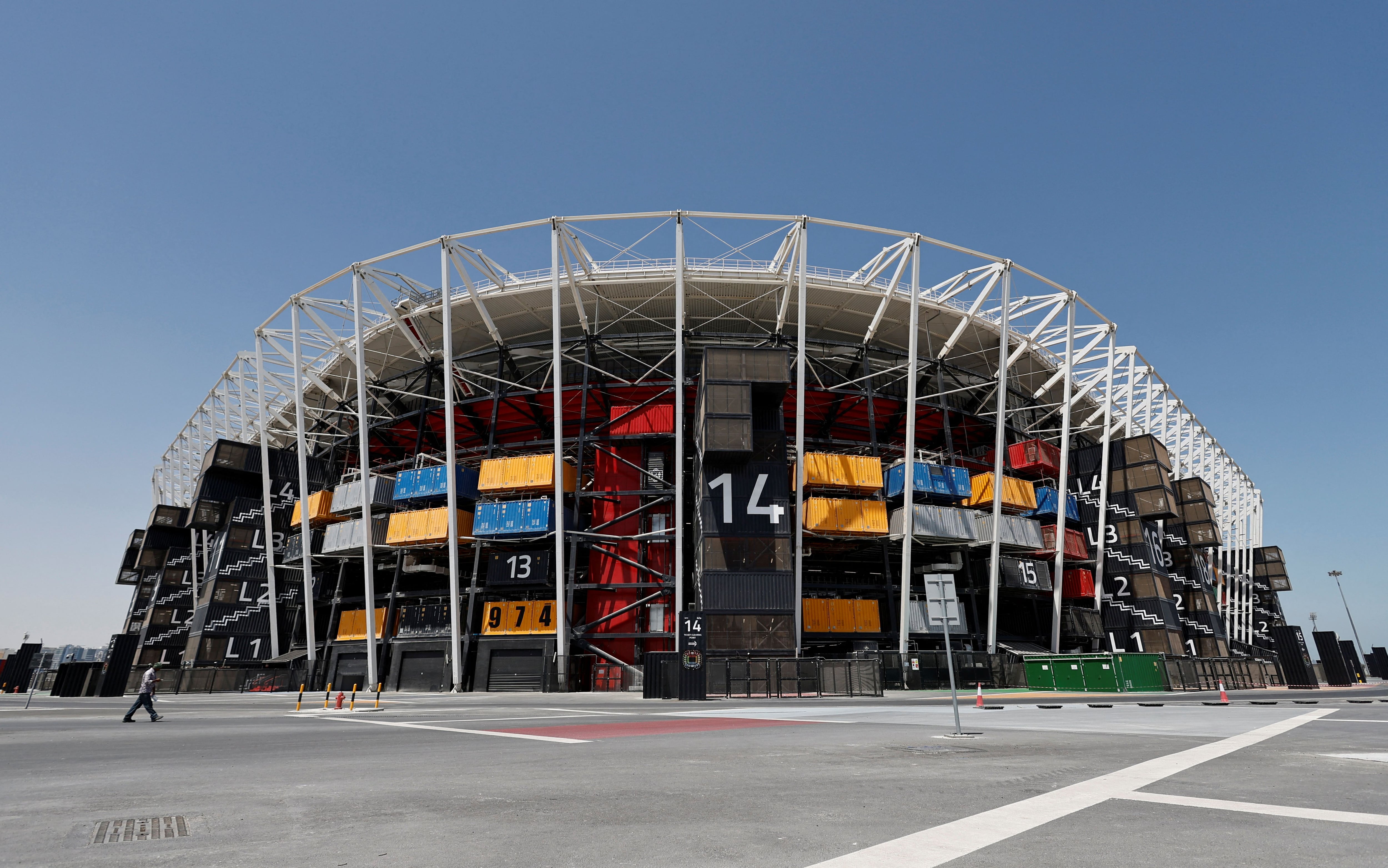
Mark Fenwick, architect who helped with the construction of the sports venue, commented in dialogue with the EFE agency that in addition to being the only removable stadium, it also has visual codes “that make it easier for the user to find them spatially”. For example, the yellow containers will be the bathrooms; the blue ones will represent the retail areas; the green ones will represent the safety and first aid rooms; the color silver was chosen for the VIP tickets and the men's prayer areas; and the black one for the women's prayer areas and identification areas in tickets.
Once the tournament is over, it will be dismantled and its parts will be used to create facilities in Qatar and will also be donated to underdeveloped countries. In the World Cup, it will be used for seven matches: six in the group stage and one in the round of 16.
• Al Janoub Stadium
Located in the southern city of Al Wakrah, with capacity for 40,000 people, this venue opened on May 16, 2019 with the Amir Cup final dispute. Its exterior design and the drawing of the stands are a clear message with the close relationship that this municipality maintains with the sea. It has a retractable roof and a cooling system so that spectators do not suffer from the weather conditions.

Al Wakrah is one of the oldest inhabited areas in Qatar and was for a long time a center for diving and pearl fishing. The traditional boats used in these activities inspired the futuristic design. As football fans approach the stadium, they will be greeted by a beautiful park and its elegant architecture. In this town, fans will be able to enjoy promenades, buy unique local products in the souk or discover the rich history of the area in a museum.
Residents also benefited from this construction, as it was accompanied by a school, a wedding hall, cycling, horse riding and athletics tracks; restaurants, markets and gyms. When the FIFA World Cup ends, Al Janoub Stadium will become a new home for sport and entertainment in southern Qatar. Its capacity will be reduced to 20,000 spectators, guaranteeing an electric environment.
• Al Rayyan Stadium
This venue, also known as Ahmad bin Ali Stadium, is home to the city's two main football clubs. They had built it in 2003 but it was demolished seven years ago to double its capacity and bring it up to 40,740 seats. Its new design, which incorporates symbols of Qatari culture with a spectacular undulating façade, was reopened in December 2020. Meanwhile, in the facilities surrounding the stadium there are also structures in the form of sand dunes reminiscent of the territory of the west of the country.

Because of its location on the edge of the desert, the preservation of nature and its gifts has long been a priority in the hardy Al Rayyan, and this stadium is no exception: building materials that do not harm the environment have been used. Every part of the stadium district has been designed with sustainability in mind. And, once the World Cup matches are hosted, almost half of the seats will be withdrawn and handed over to football development projects abroad.
• Khalifa International Stadium
It has been the home of Qatari football and sports for almost half a century. After several renovations and extensions, it became one of the eight stadiums of the World Cup, but with the difference that it is the only one that was not built for the occasion. It was built in 1976 in the city of Al Rayyan and, since then, it has hosted several sports competitions, such as an Argentina-Brazil friendly in 2010 or the 2019 World Athletics Championship, to name a few.
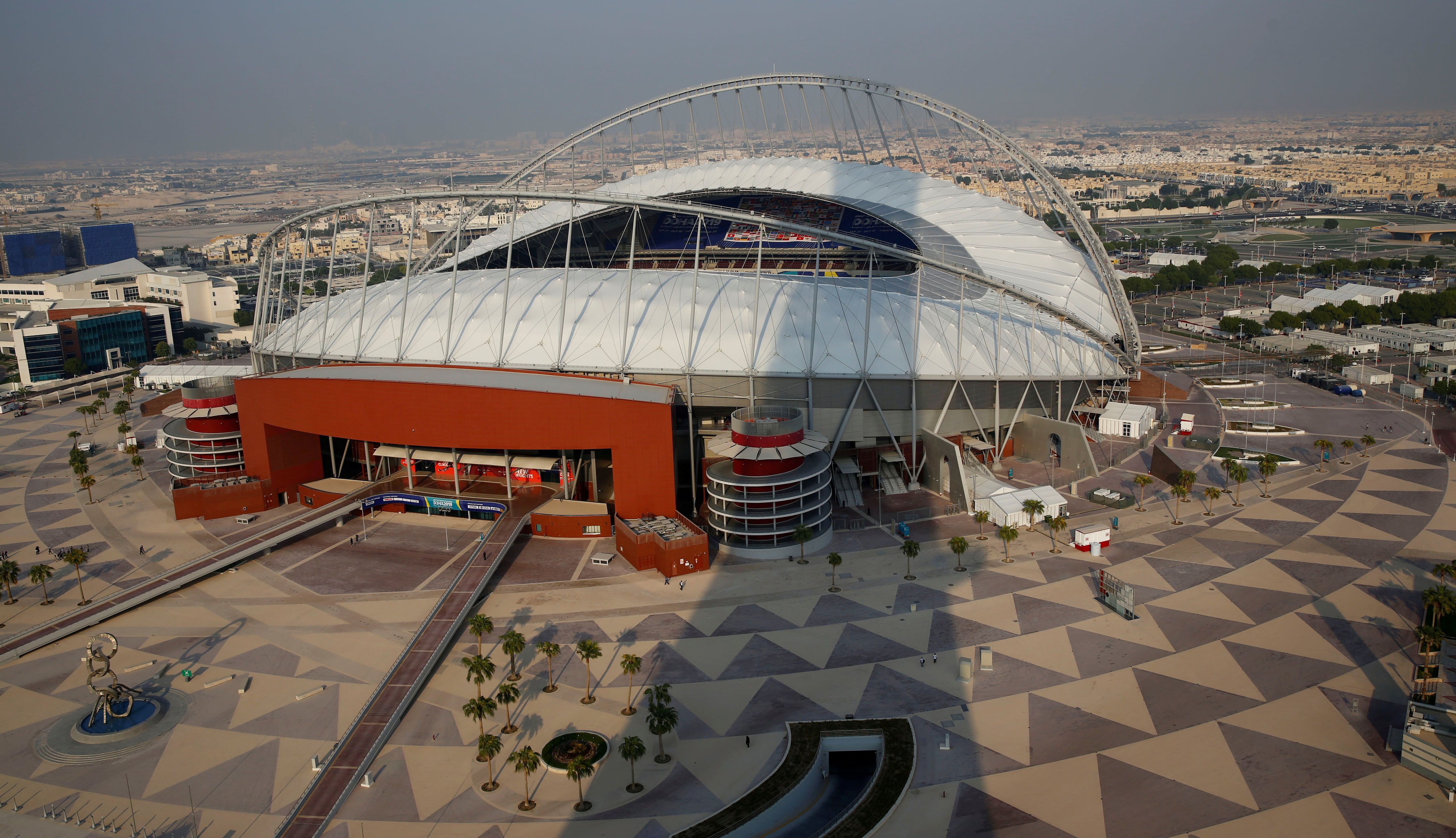
The stadium, which is located in the center of all venues, was reopened in 2017 with a capacity for more than 40,000 people seated. In its current design, the two arches that support its ceilings and crown its structure are characteristic, symbolizing the union of fans from all over the world. In this stadium, group stage matches will be played, as well as the round of 16 and the duel for third place.
• Al Thumama Stadium
It is located 12 kilometers south of Doha, near Hamad International Airport, and was opened last October. It is named after a native tree that grows in the area and its architecture also seeks to celebrate Arab culture and traditions. In this case, it has a circular shape that represents the gahfiya, the hat worn by youth and men throughout the Middle East for centuries. It is a central element in Arab families that symbolizes the dignity and independence that each young person incorporates on their journey to adulthood.
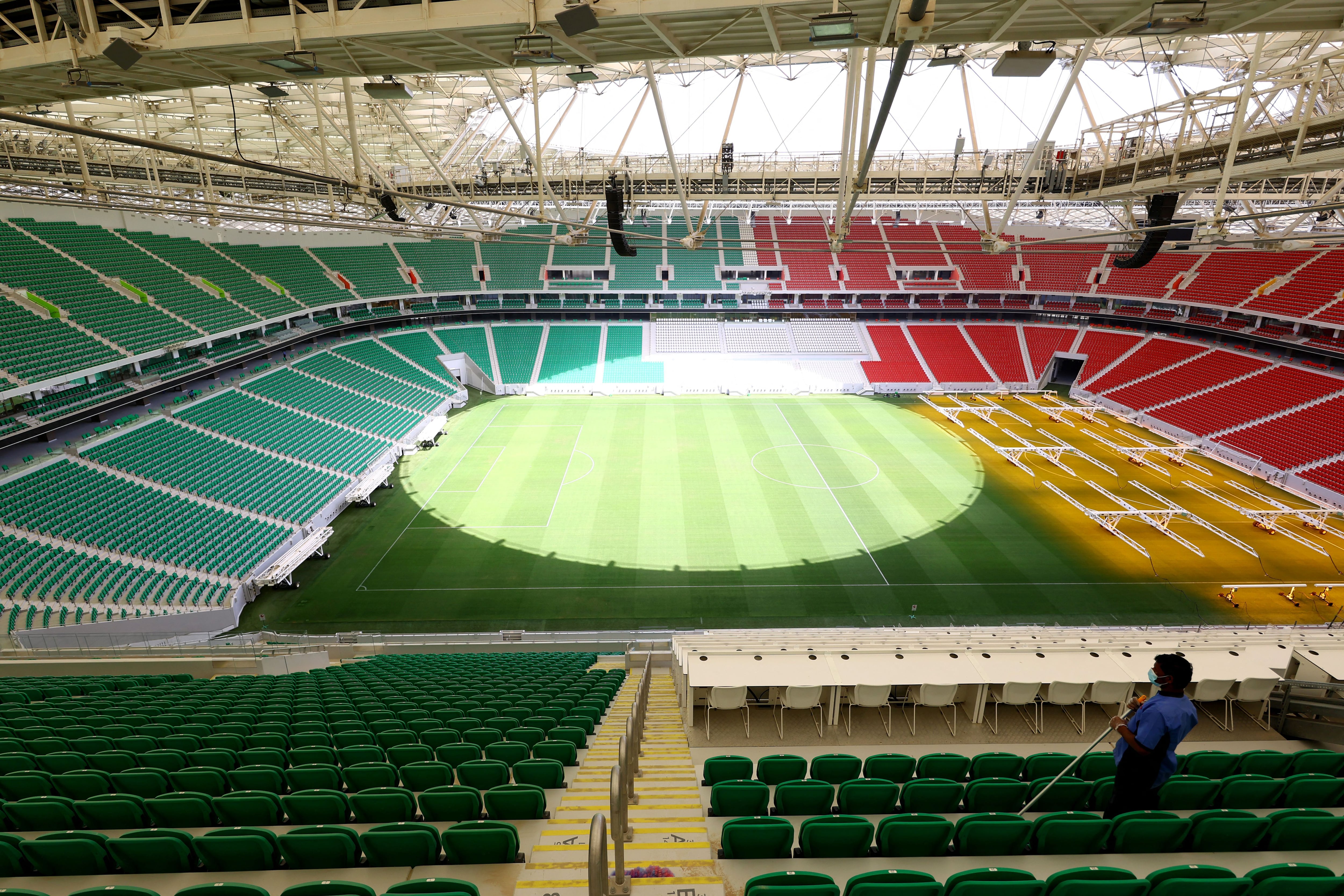
During the World Cup, its capacity will be 69,000 spectators and then reduced by half to adapt to local needs. The stadium will be home to a new home of the Aspetar Sports Clinic, a world-class orthopedics and sports medicine clinic, which will include a boutique hotel on the site of the upper grandstands. In this event, group stage matches will be played, as well as the eighth and quarterfinals.
• Education City Stadium
This stadium owes its name to the fact that its landscape is dotted with leading universities, where cutting-edge research is conducted and academics inspire future generations of students on the Asian continent. It is the headquarters of the Qatar Foundation for Education, Science and Community Development. Its capacity is 40,000 spectators and it will also be halved once its participation is over, which will be until the quarterfinal stage.
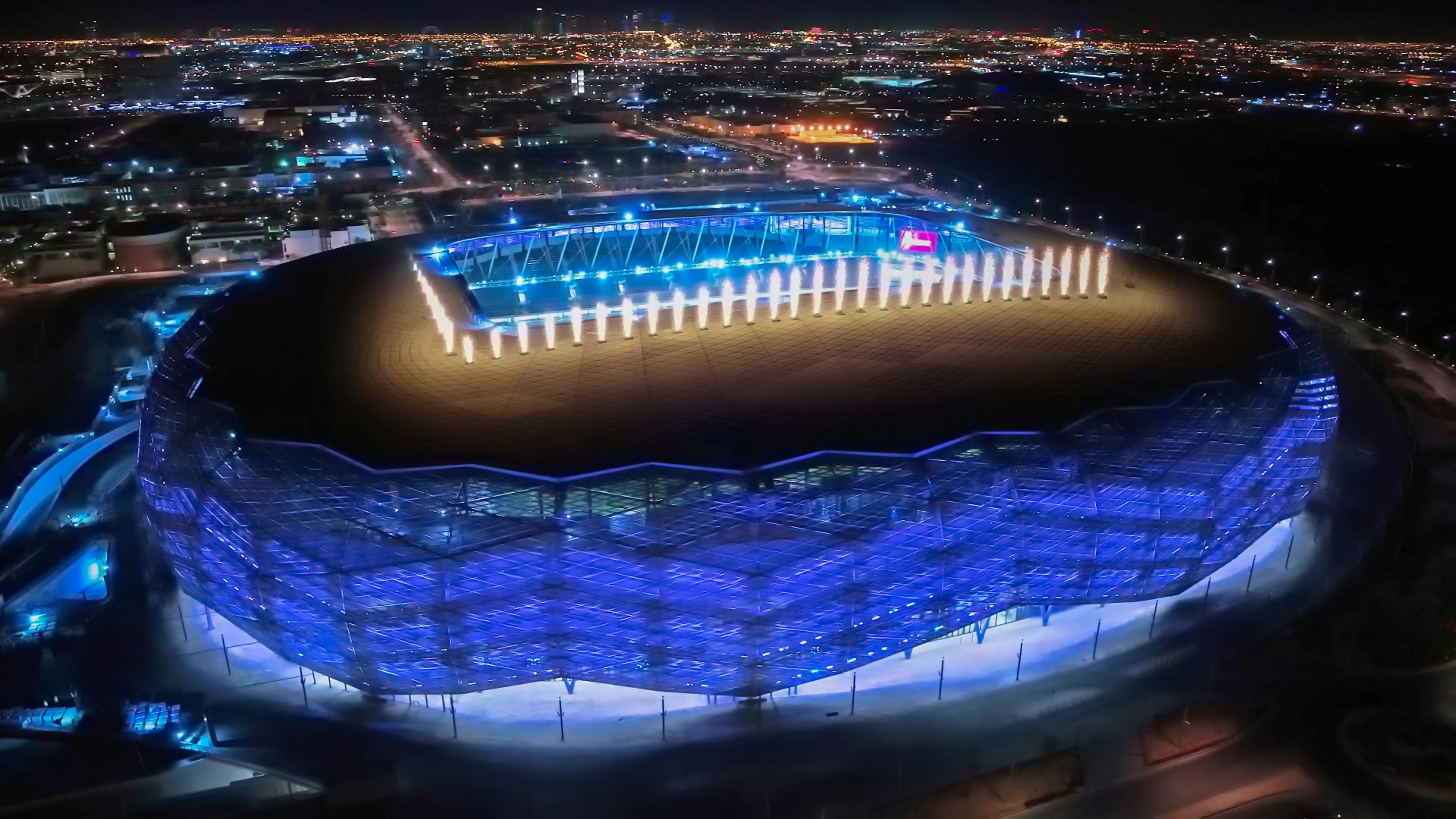
Fans will be able to easily reach this stadium by road or metro, as it is only 7 kilometres from the city of Doha. As with all World Cup stadiums, they have advanced cooling technologies to ensure pleasant temperatures throughout the year for players and fans.
• Al Bayt Stadium
It is located in the city of Jor, 45 kilometers north of Doha, and has the capacity to accommodate 60,000 spectators inside. This will be the venue where the opening ceremony and the first match of the World Cup event will take place, which is scheduled for November 21, 2022, with the Qatar team as the main protagonist. He also has a semifinal match planned.
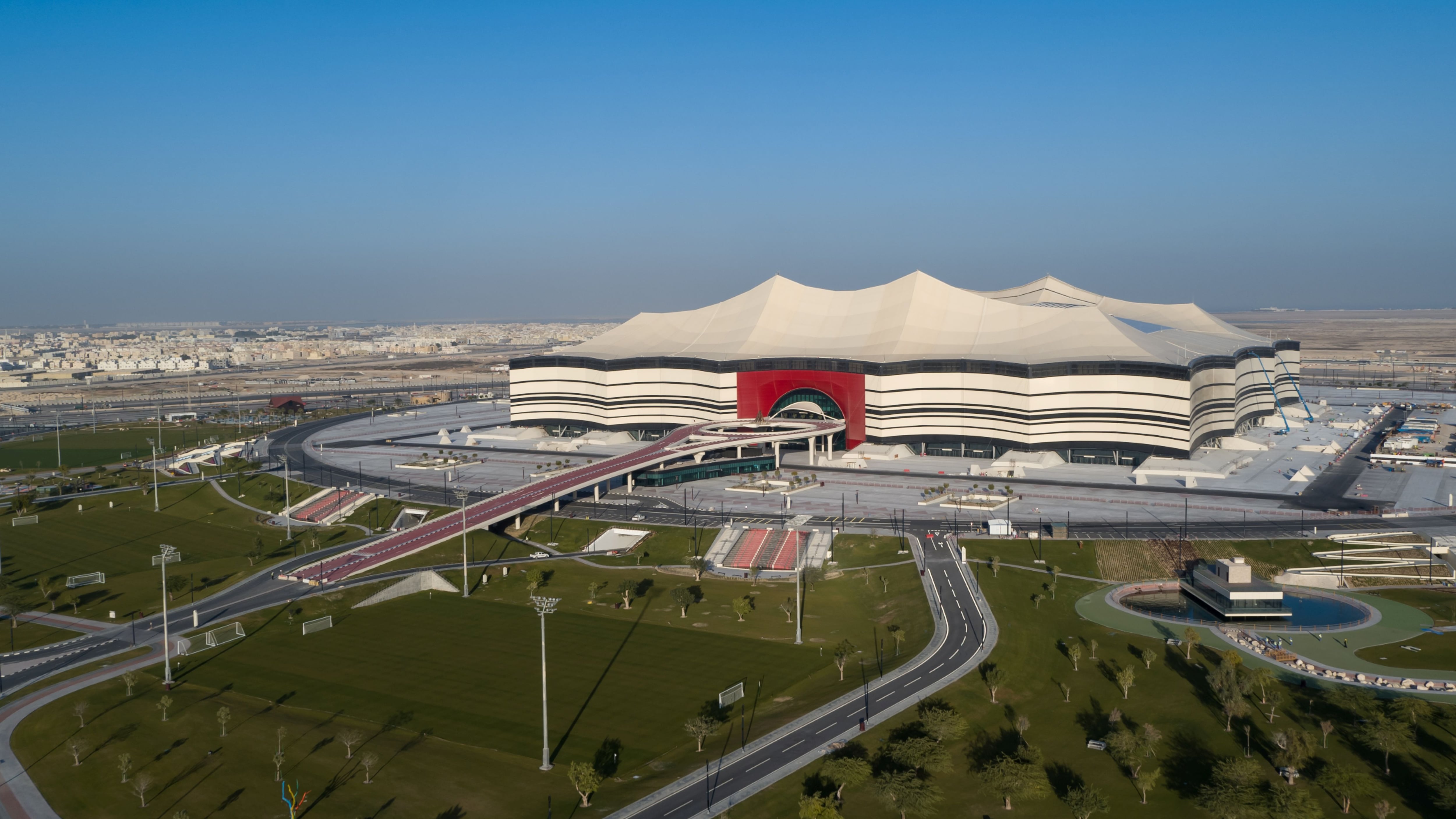
Its exterior design is striking: it is inspired by an Arab tent. Its façade refers to the historic shops used by nomadic populations in Qatar and the Gulf region, known as 'bayt al sha'ar'. It has a roof that is retractable and is surrounded by 400,000 square meters of green space and play areas. After the event, the stadium will fulfill the destination of every nomadic store and will be partially dismantled: the upper tray will be removed, its capacity will be reduced to 32,000 spectators and the free space will be occupied by a five-star hotel and sports facilities for the local population.
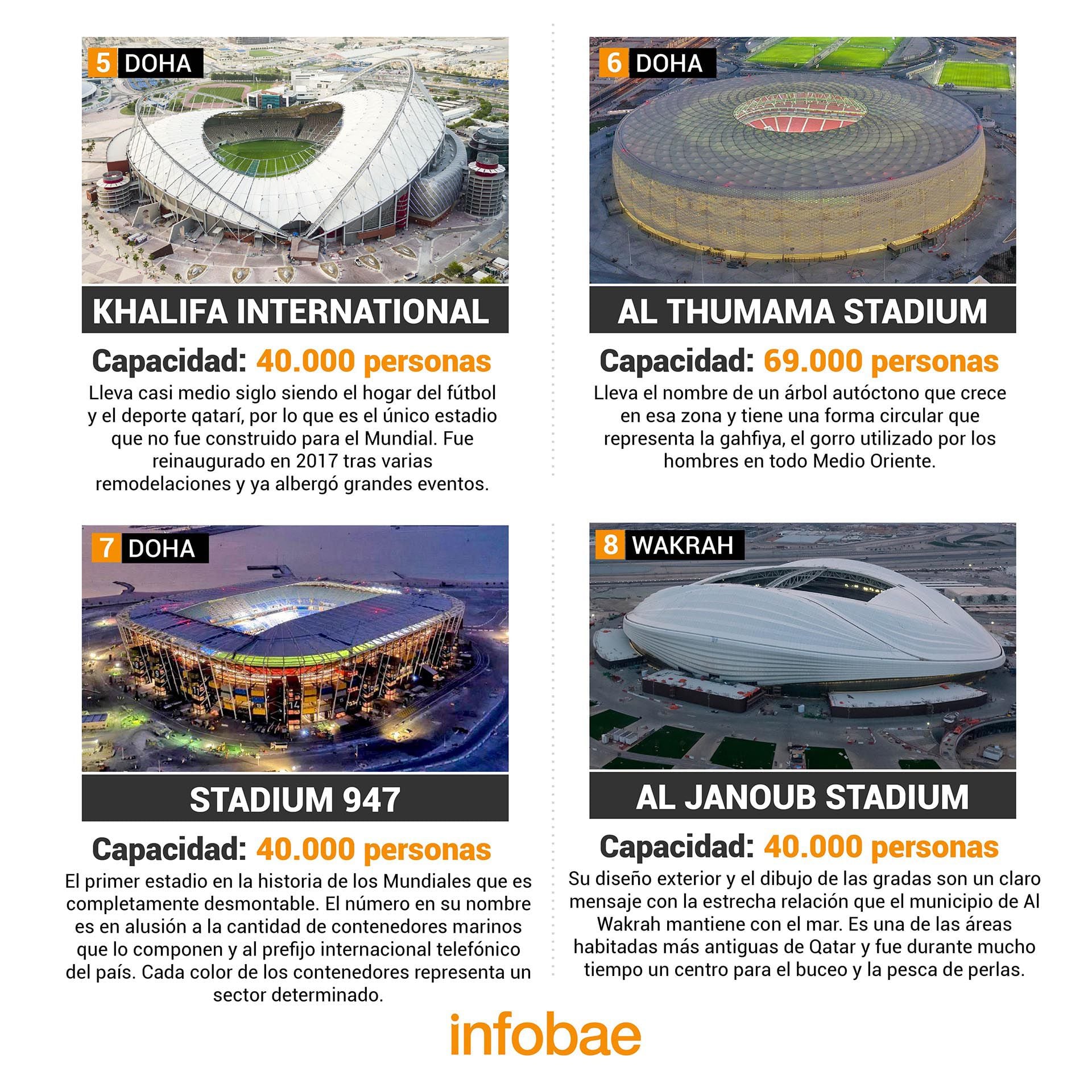
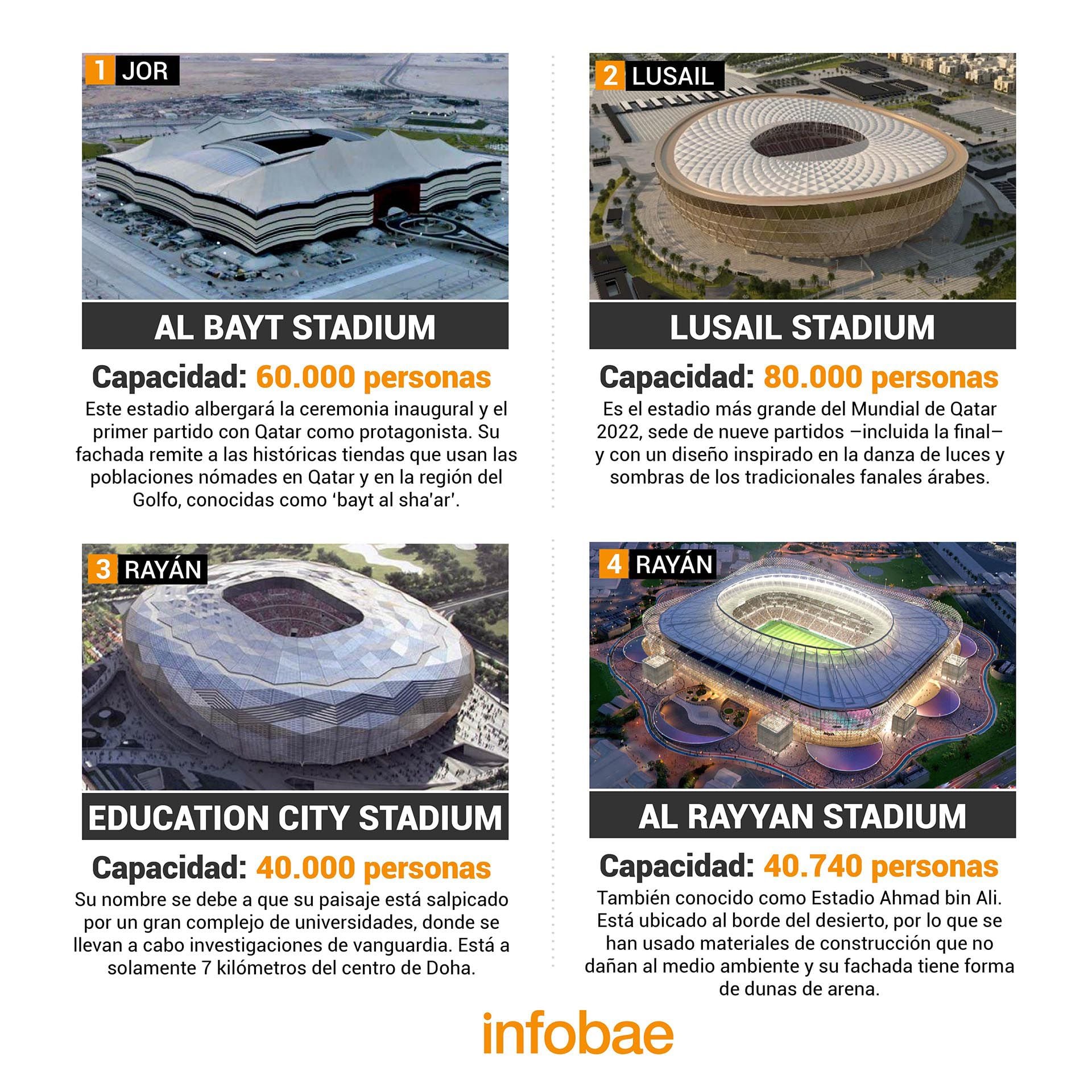
WHAT IS THE QATAR STADIUM MONITORING CENTRE 2022 LIKE
The eight stadiums of the Qatar 2022 FIFA World Cup will be monitored from facilities on the outskirts of Doha that will allow organizers to have real-time and simultaneous control of everything that happens in the vicinity during matches. This hall is located on the Aspire sports campus, a radius of 50 kilometers from the country's capital, and was created to handle the unprecedented large influx of fans that will be present during the event without problems.
“We have the ability to remotely monitor every system we can, control every system, and therefore change behavior in stadiums. We may also receive alarms and notifications as part of proactive monitoring in the command center. Before anything goes wrong,” said Niyas Abdulrahiman, CEO.
KEEP READING:
Últimas Noticias
Debanhi Escobar: they secured the motel where she was found lifeless in a cistern

The oldest person in the world died at the age of 119

Macabre find in CDMX: they left a body bagged and tied in a taxi
The eagles of America will face Manchester City in a duel of legends. Here are the details

Why is it good to bring dogs out to know the world when they are puppies



